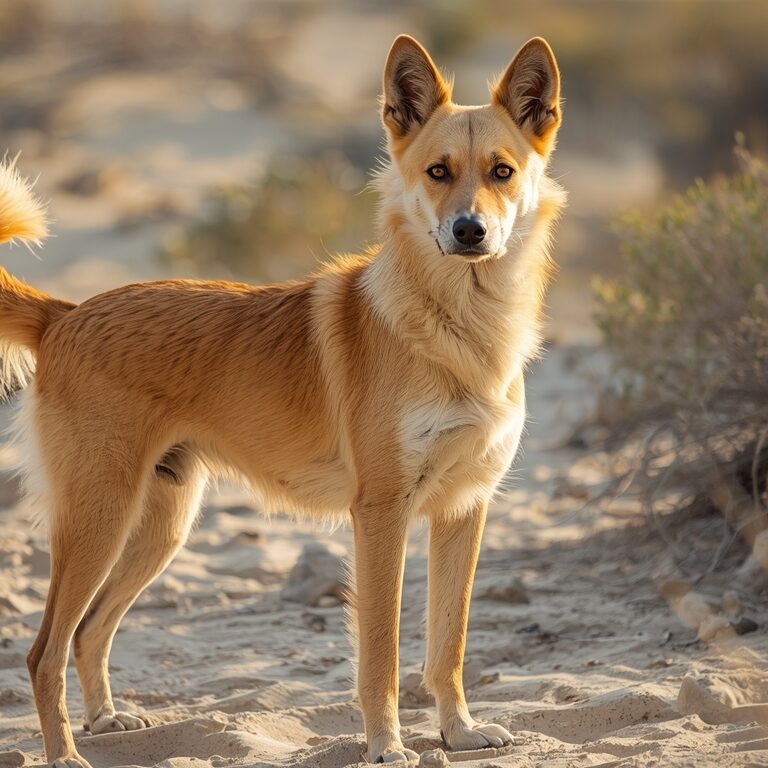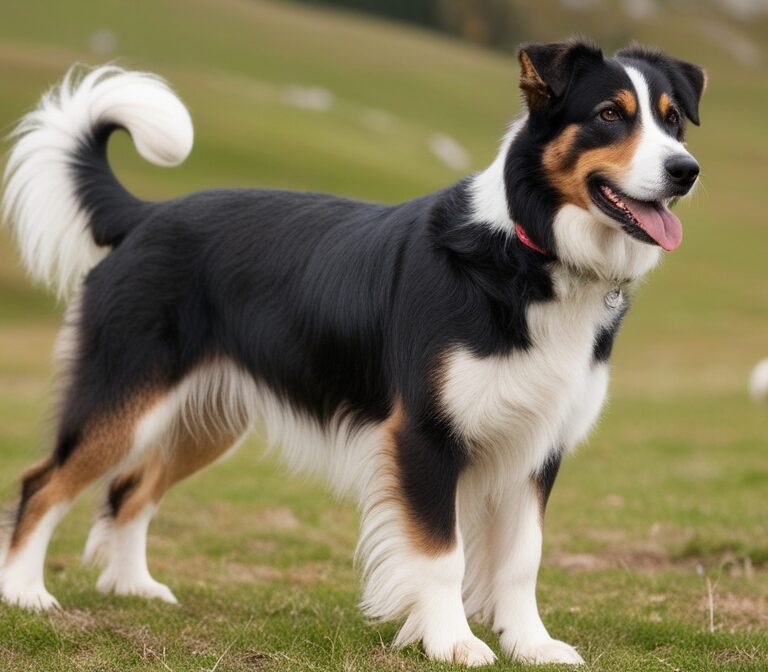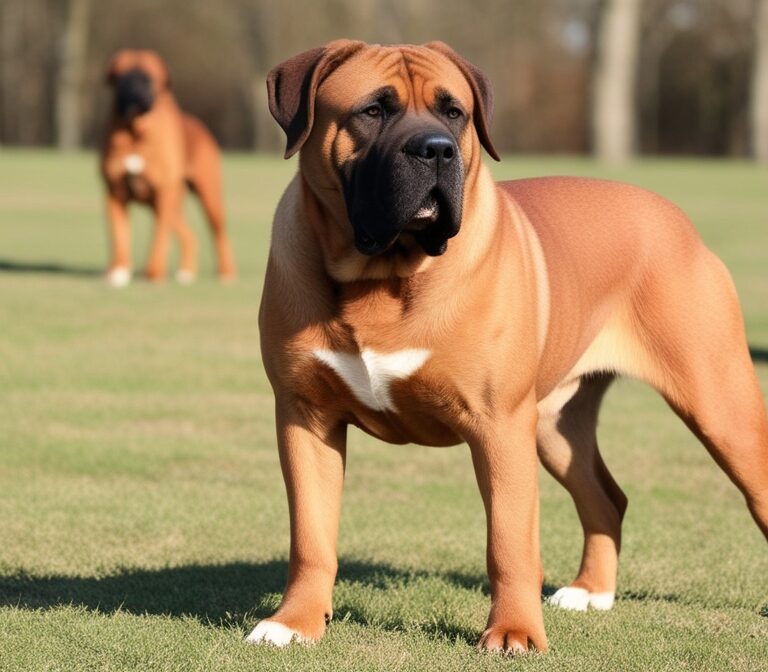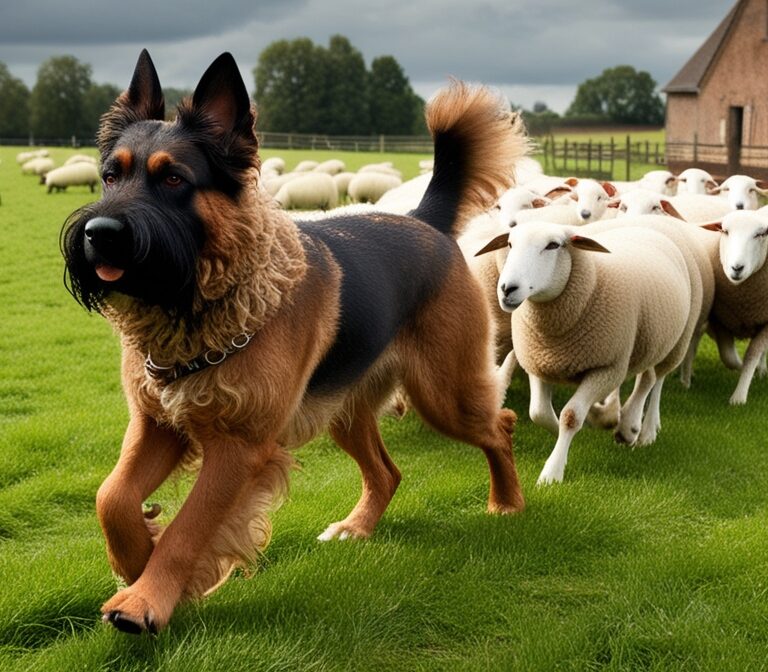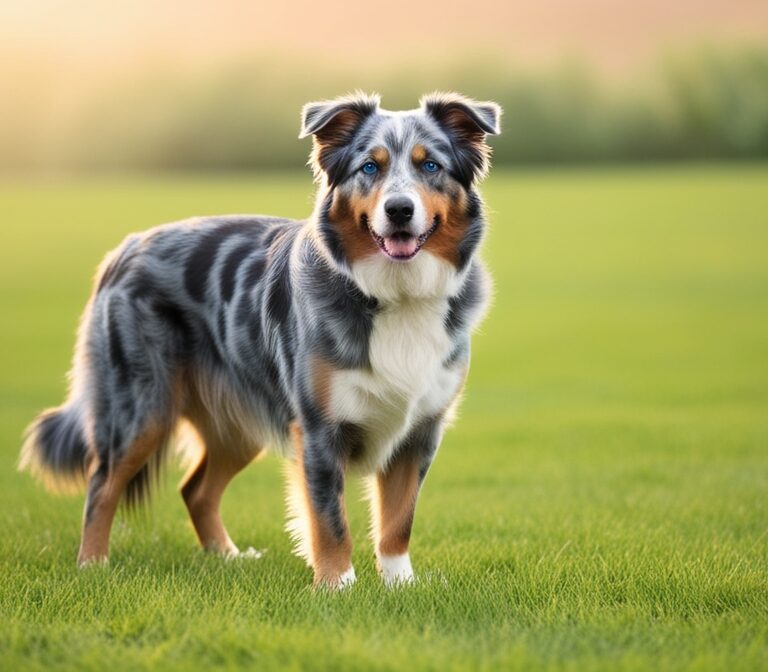Schapendoes Dog: Complete Breed Guide

Introduction to the Schapendoes Dog
The Schapendoes dog, also known as the Dutch Sheepdog, is a rare but increasingly admired herding breed from the Netherlands. With its long, shaggy coat, lively personality, and loyal temperament, the Schapendoes stands out as both a working dog and a family companion. Historically bred for herding sheep in the Dutch countryside, this breed combines intelligence, endurance, and friendliness in a way that makes it versatile for multiple roles.
Unlike more mainstream herding breeds such as the Border Collie or German Shepherd, the Schapendoes remains relatively unknown outside Europe. However, enthusiasts value it for its adaptability, playful demeanor, and strong bond with families. The breed is officially recognized by the Fédération Cynologique Internationale (FCI) and acknowledged by the American Kennel Club (AKC) under its Foundation Stock Service, marking it as a breed with growing international recognition.
This guide explores the origin, appearance, temperament, grooming needs, health, and training requirements of the Schapendoes, giving potential owners and dog lovers a thorough understanding of this unique Dutch breed. By the end, readers will know whether the Schapendoes is the right companion for their lifestyle.
Origin and History of the Schapendoes
The history of the Schapendoes stretches back to the 19th century in the Netherlands, where farmers relied on agile dogs to herd sheep across rugged terrain. The breed is often referred to as the Dutch Sheepdog, though it is distinct from other Dutch herding breeds. Farmers valued the Schapendoes for its independent thinking, watchful instincts, and ability to manage flocks with minimal supervision.
During World War II, the population of Schapendoes dogs nearly vanished. However, dedicated Dutch breeders revived the breed, ensuring its survival. In 1947, enthusiasts formed the Dutch Schapendoes Club, and by 1952, the breed was officially recognized by the Dutch Kennel Club (Raad van Beheer). Later, the Fédération Cynologique Internationale (FCI) included the Schapendoes in its registry under Group 1: Sheepdogs and Cattle Dogs.
Outside the Netherlands, the Schapendoes is still relatively rare, though its popularity is rising in Germany, Scandinavia, and North America. Today, it is cherished not only for herding but also as a sporting dog in activities such as agility, obedience, and rally competitions. Its historical role as a working farm dog continues to influence its high energy levels and keen intelligence.
Breed Classification and Standards
The Schapendoes falls under the herding dog category, which includes breeds developed to manage livestock. In terms of breed standards, different kennel clubs emphasize slightly different criteria, but common traits define the Schapendoes worldwide.
- Group Classification:
- FCI: Group 1 – Sheepdogs and Cattle Dogs
- AKC: Foundation Stock Service (Herding)
- UKC: Herding Dog
- FCI: Group 1 – Sheepdogs and Cattle Dogs
- General Breed Standard Traits:
- Size: Medium, typically 16–20 inches (40–50 cm) tall at the shoulder
- Weight: Between 25–55 pounds (11–25 kg)
- Coat: Long, dense, and wavy with a tousled appearance
- Head: Distinctive with a shaggy fringe covering expressive eyes
- Tail: Long and feathered, often carried high when excited
- Size: Medium, typically 16–20 inches (40–50 cm) tall at the shoulder
The Schapendoes breed standard emphasizes movement, agility, and balance, as these were essential traits for herding sheep. Unlike some other herding dogs bred primarily for appearance, the Schapendoes maintains a working-dog physique. This makes it a functional breed, equally suited for active families and farm work.
Breed clubs across Europe maintain strict breeding guidelines to preserve genetic health, coat quality, and temperament. As a result, today’s Schapendoes dogs closely resemble the early herding dogs of the Dutch countryside, carrying forward centuries of working tradition.
Physical Appearance of the Schapendoes
The Schapendoes has a distinctive look, characterized by its shaggy, long coat and alert expression. Despite its somewhat unkempt appearance, the dog is agile, light on its feet, and built for endurance.
- Size and Build:
Schapendoes are medium-sized dogs, generally standing 16–20 inches tall and weighing 25–55 pounds. Their bodies are slightly longer than tall, giving them a rectangular frame designed for stamina rather than speed. - Coat and Colors:
The hallmark of the Schapendoes is its long, dense, and slightly wavy double coat. The coat provides protection from harsh weather while working outdoors. Common coat colors include black, blue-gray, brown, or white with patches, though black with lighter shades is most common. - Facial Features:
One of the most charming aspects of the Schapendoes is its shaggy head and expressive eyes, often partially hidden by fur. This gives the dog an endearing, almost comical look, though the eyes remain sharp and attentive. - Tail:
The tail is long, feathered, and carried high and curved when the dog is in motion. It acts as a communication tool when herding sheep, signaling intentions to the flock.
The Schapendoes’ overall appearance communicates its dual nature: a hard-working farm dog with a playful, family-friendly charm. Its coat requires regular maintenance, but it remains one of the breed’s most striking and recognizable features.
Temperament and Personality
The Schapendoes temperament is one of its most defining characteristics. Owners often describe the breed as attentive, intelligent, watchful, lively, and friendly. These qualities make the Schapendoes an excellent choice for active families as well as individuals who enjoy spending time outdoors.
- Intelligence and Trainability:
As a herding breed, the Schapendoes is exceptionally smart. It can quickly learn commands and adapt to new situations. Unlike some breeds that rely solely on human guidance, the Schapendoes was bred to think independently while managing sheep, which means it can show a streak of stubbornness. Consistent, positive reinforcement training is the key to success. - Watchful and Protective Instincts:
The Schapendoes is naturally alert and watchful, traits inherited from its working background. While it is not typically aggressive, it makes an excellent watchdog, often barking to alert its family of strangers or unusual activity. - Playfulness and Energy:
Lively and full of enthusiasm, the Schapendoes thrives in environments where it has opportunities to play, run, and engage in problem-solving activities. It enjoys games like fetch, agility courses, and even hide-and-seek. - Family-Oriented Behavior:
This breed is affectionate and enjoys spending time with its human family. It tends to form strong attachments and does not do well if left alone for extended periods. When integrated into family life, the Schapendoes shows loyalty and friendliness, often getting along well with children.
Overall, the Schapendoes is best described as a bright, cheerful companion with a blend of independence and devotion. Its temperament makes it versatile—suitable for work, sport, and companionship.
Is the Schapendoes Hypoallergenic?
One of the most common questions potential owners ask is whether the Schapendoes is hypoallergenic. The answer is no. The breed’s long, dense, double coat sheds regularly, and its hair can trap dander, which often triggers allergies in sensitive individuals.
- Why It Isn’t Hypoallergenic:
Unlike breeds such as the Poodle or Portuguese Water Dog, which produce less dander, the Schapendoes has a coat that requires frequent grooming to minimize shedding. Even with consistent maintenance, allergens are unavoidable. - Grooming to Reduce Allergens:
While the Schapendoes cannot be made hypoallergenic, regular brushing, bathing, and vacuuming can reduce dander levels in the home. Using air purifiers and keeping the dog out of bedrooms may also help allergy sufferers. - Who Should Avoid This Breed:
Families with members who have moderate to severe pet allergies should consider a truly hypoallergenic breed instead. However, for those with mild sensitivities, diligent grooming may make cohabitation manageable.
The Schapendoes may not be hypoallergenic, but for dog lovers without significant allergies, its other qualities—intelligence, loyalty, and playfulness—often outweigh this drawback.
Living Environment Requirements
The ideal living environment for a Schapendoes is one that balances indoor comfort with plenty of outdoor access.
- Urban vs. Rural:
While originally bred for wide-open fields in the Netherlands, the Schapendoes can adapt to urban environments if its exercise needs are met. A house with a yard is ideal, but dedicated owners in apartments can manage with multiple daily walks and active play sessions. - Space Needs:
This breed is medium-sized but highly energetic, meaning it thrives in environments where it can run freely. A securely fenced yard provides opportunities for independent play and exploration. - Indoor Behavior:
Indoors, the Schapendoes is relatively calm if it has had sufficient exercise. It enjoys being near family members and often follows them from room to room. However, if under-stimulated, it may develop destructive behaviors such as chewing or digging. - Climate Tolerance:
Thanks to its thick, weather-resistant coat, the Schapendoes can handle cold climates well. In hot or humid regions, extra care is required to prevent overheating. Owners should avoid exercising the dog during peak heat and provide plenty of water and shade.
Ultimately, the Schapendoes is flexible in living arrangements, but it requires daily mental and physical stimulation. A sedentary lifestyle or lack of outdoor activity will not suit this breed.
Exercise and Activity Needs
The Schapendoes is an active herding dog with high energy levels, meaning exercise is a non-negotiable part of its care routine. Without enough activity, the dog can become bored, anxious, and destructive.
- Daily Exercise Requirements:
The breed needs at least 60–90 minutes of exercise daily, broken into walks, play sessions, and training activities. Off-leash running in secure areas is highly beneficial. - Best Activities for Schapendoes:
- Herding Trials: Tapping into its natural instincts.
- Agility Courses: Jumping, weaving, and climbing.
- Obedience Training: Mental stimulation through commands and tricks.
- Fetch and Frisbee: Great for cardiovascular exercise.
- Herding Trials: Tapping into its natural instincts.
- Importance of Mental Stimulation:
Physical activity alone is not enough. The Schapendoes thrives on mental challenges, including puzzle toys, hide-and-seek games, and training tasks. - Lifestyle Match:
This breed suits active individuals, outdoor enthusiasts, and sporty families. Hikers, joggers, and dog sport competitors find the Schapendoes an excellent partner.
A Schapendoes that receives adequate exercise and stimulation becomes a happy, balanced companion. Without it, owners may struggle with restless or destructive behavior.
Grooming and Coat Care
The Schapendoes coat is one of its most striking features, but it also requires significant upkeep.
- Brushing Routine:
The long, wavy coat should be brushed 2–3 times per week to prevent matting and tangling. During shedding seasons, daily brushing may be necessary. - Bathing Needs:
Bathing every 6–8 weeks is sufficient unless the dog becomes particularly dirty. Overbathing can strip the coat of natural oils. - Professional Grooming:
While the Schapendoes doesn’t require elaborate trims, some owners choose professional grooming every few months to maintain coat health. - Ear, Nail, and Teeth Care:
In addition to coat maintenance, owners must regularly clean the ears, trim nails, and brush teeth to prevent infections and dental disease. - Coat Challenges:
The long hair around the eyes and face may trap debris. Regular trimming around the eyes keeps vision clear and prevents irritation.
Overall, grooming a Schapendoes is manageable with commitment, but it is not a low-maintenance breed. Families should be prepared for consistent coat care to keep their dog healthy and comfortable.
Feeding and Nutrition
The diet of a Schapendoes dog plays a vital role in maintaining its energy levels, coat health, and overall well-being. As a medium-sized, active herding breed, the Schapendoes requires a balanced diet that supports both its physical endurance and mental agility.
- Daily Caloric Intake:
An adult Schapendoes generally needs 1,000–1,500 calories per day, depending on activity level, size, and age. Active working dogs or those involved in agility may require more. - Protein and Fat Requirements:
High-quality protein is essential for muscle maintenance. Look for dog foods with meat listed as the first ingredient (e.g., chicken, lamb, or fish). Fat provides sustained energy, particularly for a breed accustomed to long hours of herding. - Carbohydrates and Fiber:
While protein and fat are crucial, complex carbohydrates such as brown rice, sweet potatoes, and oats help maintain stable energy throughout the day. Fiber supports digestion and prevents obesity. - Best Diet Choices:
- Dry kibble formulated for medium-sized active dogs
- Raw food diets (with guidance from a veterinarian)
- Homemade diets with lean meats, vegetables, and supplements
- Dry kibble formulated for medium-sized active dogs
- Foods to Avoid:
Toxic foods include chocolate, grapes, raisins, onions, garlic, and xylitol. Overfeeding fatty treats should also be avoided, as it can lead to weight gain. - Feeding Schedule:
Puppies benefit from 3–4 small meals daily, while adults do well with 2 meals per day. Keeping a consistent schedule helps prevent bloating and digestion issues.
Proper nutrition not only sustains the Schapendoes’ energy needs but also contributes to a shiny, healthy coat—an important factor for a breed with long hair.
Training the Schapendoes
Training a Schapendoes dog is both rewarding and necessary, given its intelligence and independent streak. Early and consistent training ensures the dog grows into a well-mannered companion while also providing mental stimulation.
- Early Socialization:
Exposing puppies to different people, environments, and other animals helps reduce shyness and ensures a confident adult dog. Puppy classes are highly recommended. - Obedience Training:
The breed responds well to positive reinforcement techniques, such as treats, praise, and play. Harsh methods are counterproductive and may cause the dog to shut down or resist. - Herding Instinct Training:
Since the Schapendoes is a natural herder, owners can channel this instinct into structured activities like herding trials, agility, and rally obedience. These activities fulfill its working drive while strengthening the bond with its owner. - Common Challenges:
- Independence: May prefer making decisions rather than blindly following orders.
- Barking: The Schapendoes tends to bark when watchful or excited.
- Distraction: Its curiosity can sometimes make focus difficult.
- Independence: May prefer making decisions rather than blindly following orders.
- Training Tip:
Keep training sessions short (10–15 minutes) and engaging. Using a variety of exercises helps prevent boredom.
With the right approach, the Schapendoes becomes a quick learner and loyal training partner, excelling in obedience, agility, and even advanced tricks.
Schapendoes with Families and Children
The Schapendoes is a family-oriented breed that thrives in households where it is treated as part of the pack. Its affectionate and gentle temperament makes it an excellent choice for families with children.
- With Children:
Schapendoes dogs are generally patient and playful around kids. They enjoy games, running, and interactive play. Supervision is always important with young children, but overall, the breed is considered safe and trustworthy. - Protective Instincts:
While not aggressive, the Schapendoes is naturally watchful, making it a reliable guardian. It may bark to alert the family if it senses unfamiliar people or situations. - Energy Match:
Families that enjoy outdoor activities such as hiking, cycling, or playing sports find the Schapendoes an ideal companion. It happily joins in family adventures and rarely tires quickly. - Potential Concerns:
If left alone for long periods, the Schapendoes may develop separation anxiety, leading to undesirable behaviors. Families should ensure the dog gets plenty of attention and interaction.
In short, the Schapendoes fits beautifully into active family life, offering companionship, protection, and endless entertainment.
Compatibility with Other Pets
When it comes to other animals, the Schapendoes dog is generally friendly and adaptable, especially if introduced properly from a young age.
- With Other Dogs:
The breed’s playful and social nature means it usually gets along well with other dogs. It enjoys canine companionship and thrives in multi-dog households. - With Cats:
Success with cats depends on early socialization. A Schapendoes raised with cats often coexists peacefully, although its herding instinct may cause it to chase from time to time. - With Smaller Pets:
Because the breed has a herding drive, it may try to chase rabbits, birds, or rodents. Supervision and training are crucial if the household includes smaller animals. - Best Practices:
- Introduce pets gradually in controlled settings.
- Use positive reinforcement to encourage calm interactions.
- Ensure each animal has its own safe space.
- Introduce pets gradually in controlled settings.
Overall, the Schapendoes is considered a pet-friendly breed, provided introductions are handled thoughtfully and consistently.
Health and Lifespan
The Schapendoes lifespan averages 12–15 years, making it a relatively long-lived breed. With proper care, many individuals remain active and healthy well into their senior years.
- Common Health Issues:
While generally robust, the Schapendoes may be prone to certain conditions:
- Hip Dysplasia: A genetic condition affecting joint alignment.
- Progressive Retinal Atrophy (PRA): An inherited eye disease that can cause blindness.
- Ear Infections: Long hair and floppy ears can trap moisture, leading to infections.
- Allergies and Skin Issues: The thick coat may contribute to irritation if not groomed regularly.
- Hip Dysplasia: A genetic condition affecting joint alignment.
- Preventive Measures:
- Hip and eye screenings from reputable breeders
- Regular veterinary checkups
- Consistent ear cleaning and grooming
- Proper diet and exercise to maintain healthy weight
- Hip and eye screenings from reputable breeders
- Longevity Factors:
Dogs that receive consistent exercise, quality nutrition, preventive health care, and mental stimulation tend to live longer, healthier lives.
In general, the Schapendoes is considered a healthy breed, thanks to responsible breeding practices that prioritize genetic soundness.
Veterinary Care and Preventive Health
Preventive care is essential for ensuring a Schapendoes’ long-term health and quality of life.
- Routine Veterinary Visits:
Annual checkups allow for early detection of issues such as hip problems or dental disease. Senior dogs may benefit from biannual visits. - Vaccinations and Parasite Control:
Core vaccinations protect against diseases such as rabies, parvovirus, and distemper. Regular treatment for fleas, ticks, and worms is also crucial. - Dental Care:
Like many breeds, the Schapendoes is prone to dental tartar buildup. Daily brushing and regular dental checkups help prevent periodontal disease. - Weight Management:
Obesity can worsen joint problems and shorten lifespan. Owners should monitor body condition and adjust feeding accordingly. - Spaying and Neutering:
These procedures not only prevent unwanted litters but may also reduce the risk of certain cancers and behavioral issues.
When owners commit to regular veterinary care and preventive health practices, the Schapendoes enjoys a long, vibrant life filled with activity and companionship.
Adopting or Buying a Schapendoes
When considering adding a Schapendoes dog to your family, you have two main options: adopting from a rescue organization or purchasing from a reputable breeder. Each path comes with its own considerations.
- Adoption Options:
While the Schapendoes is still a rare breed outside the Netherlands, adoption may be possible through breed-specific rescues, European herding dog rescue groups, or general animal shelters. Adopting a dog not only saves a life but also provides a loving home to a dog in need. - Buying from Breeders:
For families set on raising a Schapendoes puppy, a responsible breeder is the best source. Look for breeders registered with organizations like the Dutch Schapendoes Club, Fédération Cynologique Internationale (FCI), or American Kennel Club (AKC) (Foundation Stock Service). A good breeder provides:
- Health screenings for genetic conditions like hip dysplasia and PRA
- Pedigree documentation
- Socialization of puppies before adoption
- Health screenings for genetic conditions like hip dysplasia and PRA
- Cost of Ownership:
Purchasing a Schapendoes puppy typically costs $1,500–$2,500 USD, depending on breeder reputation, location, and lineage. Additional expenses include food, grooming, veterinary care, and training, averaging $1,000–$1,500 annually. - Red Flags to Avoid:
Avoid puppy mills or backyard breeders who prioritize profit over health. Warning signs include lack of health records, unwillingness to show living conditions, and unusually low prices.
Choosing between adoption and purchase depends on availability and family preference, but in both cases, the goal is to ensure the Schapendoes finds a safe, loving, and responsible home.
Schapendoes Puppies: What to Expect
Bringing home a Schapendoes puppy is an exciting experience, but it requires preparation and patience.
- Appearance and Development:
Puppies are born with softer coats that gradually develop into the breed’s signature long, shaggy hair by adulthood. They typically open their eyes within 10–14 days and start showing playful, lively behavior by six weeks. - Energy and Playfulness:
Expect a highly energetic and curious puppy. Schapendoes puppies love exploring their surroundings and can be mischievous if not supervised. - Socialization Needs:
The critical socialization period (8–16 weeks) is essential. Exposing the puppy to different people, animals, sounds, and environments builds confidence and reduces the risk of future behavioral problems. - Training From Day One:
Start with house training, crate training, and basic obedience. The Schapendoes is intelligent but may show independence, so short, positive, and engaging sessions work best. - Grooming Habits:
Begin grooming early to get the puppy accustomed to brushing and handling. Even though the coat is shorter at first, regular grooming sets the foundation for lifelong care.
Raising a Schapendoes puppy is a joyful process, but families should be prepared for the time, effort, and consistency required during the first year.
Schapendoes vs Similar Herding Breeds
The Schapendoes shares similarities with other European herding dogs, but key differences set it apart.
- Schapendoes vs Bearded Collie:
Both breeds have long, shaggy coats, but the Bearded Collie is generally larger and more widely recognized. The Schapendoes is slightly more adaptable to family life, while the Bearded Collie excels in large spaces and herding trials. - Schapendoes vs Briard:
The Briard is a French herding dog that is heavier, more muscular, and protective. The Schapendoes is smaller, lighter, and often more playful, making it easier to manage in urban households. - Schapendoes vs Polish Lowland Sheepdog (PON):
Both breeds have dense coats and herding instincts. The PON is more compact and stocky, while the Schapendoes has a lighter, springier movement. - Schapendoes vs Border Collie:
The Border Collie is considered the most intelligent dog breed and is highly intense in work drive. The Schapendoes, while intelligent, is less demanding and more adaptable as a family dog.
These comparisons show that the Schapendoes strikes a balance between working ability and companion qualities, making it appealing to families who want an active yet manageable herding breed.
Working Role of the Schapendoes Today
Historically bred for herding sheep in the Netherlands, the Schapendoes continues to demonstrate its working abilities even in modern times.
- Traditional Role:
Farmers used Schapendoes dogs to move and manage sheep across rugged terrain. Their endurance, agility, and independent decision-making were crucial for long days in the field. - Modern Herding Work:
While fewer Schapendoes dogs work on farms today, the breed still participates in herding trials where it showcases its instincts. These events simulate traditional herding work and keep the breed’s skills alive. - Alternative Roles:
Beyond herding, Schapendoes dogs excel in dog sports, therapy work, and search-and-rescue training. Their intelligence and energy make them versatile in different roles. - Companion Role:
In urban and suburban environments, the Schapendoes functions primarily as a family companion. Its working heritage means it still craves mental and physical stimulation, even if it no longer herds sheep daily.
The Schapendoes proves that a dog can maintain its working instincts while thriving as a modern household pet, blending the best of both worlds.
Schapendoes in Dog Sports
Thanks to its athleticism, agility, and intelligence, the Schapendoes excels in a variety of dog sports. These activities allow the breed to express its natural energy while strengthening its bond with its handler.
- Agility:
The Schapendoes is quick and light on its feet, making it a strong performer in agility competitions involving jumps, tunnels, and weave poles. - Obedience and Rally:
With consistent training, the breed excels in obedience trials and rally competitions, where precision and teamwork are rewarded. - Flyball and Frisbee:
The Schapendoes’ lively personality makes it a natural at fast-paced games like flyball or catching frisbees. - Herding Trials:
Herding remains one of the most natural outlets for this breed. Competitions allow the dog to demonstrate traditional instincts while under handler guidance. - Benefits of Sports Participation:
Dog sports prevent boredom, reduce destructive behaviors, and improve overall health. They also give owners and dogs a shared goal, deepening the human-canine relationship.
For Schapendoes owners, engaging in dog sports is more than just recreation—it is a way to honor the breed’s heritage and ensure a happy, well-balanced lifestyle.
